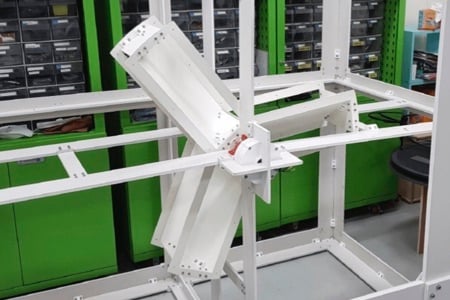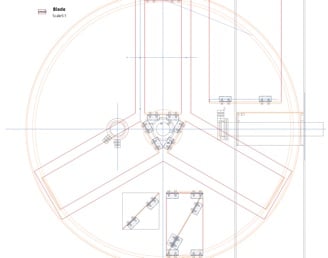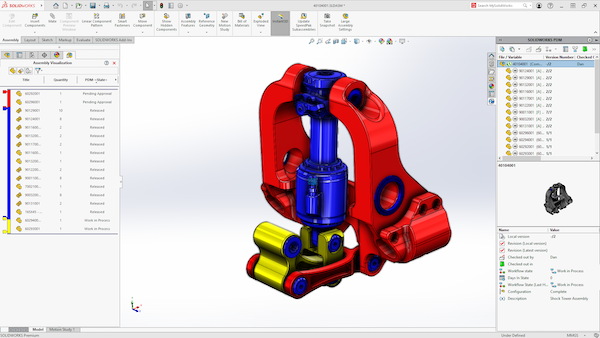Most of us use social media platforms to some degree. Wikifactory is a social platform for collaborative product development. The web site is home to an embedded hardware product development tool, Workspace, that is built within a social platform. It is a community of product designers, engineers, and enterprises that have come together to design, prototype, and manufacture hardware products from all over the world.
Wikifactory’s goals are to remove the barriers to participation, innovation, and opportunity in product design and manufacturing, so that great ideas have a better chance and a bigger positive impact on our world. In fact, according to the company, almost half of the projects on Wikifactory are aligned with the UN’s Sustainable Development Goals.

Innovation FabLab’s new wind turbine, collaboratively designed within Wikifactory’s Workspace.
Wind Cube Project
One such success on the Wikifactory platform is Innovation FabLab’s (Seoul) new wind turbine, operated with the participation of social innovators from various fields: arts, technologies, culture, and education. Innovation FabLab is committed to developing a solution to harness the wind more sustainably. With the right approach, concept, and technology, the wind cube not only solves environmental problems but offers a great source of revenue. By using the Wikifactory platform, participants were able to fabricate and create the wind turbine through 3D printing technologies.
The group had these three goals in mind when their project began:
- To create a wind turbine able to harness the power in a more sustainable and efficient way.
- To find a way to combat the challenges of climate change using wind energy.
- To create a product in a more cost-effective way which would result in higher revenue sources than traditional methods.
In the end, more than 40 participants participated from diverse backgrounds and aged between 30–70 years old, to finalize the design and find the best way to produce the turbine. The wind turbine was 100% digitally fabricated on the Wikifactory platform. All parts were produced using a CNC router and 3D printer, and the pieces were put together using bolts, nuts, and bearings.

The wind turbine blades were designed on the Wikifactory platform and produced using a 3D printer and CNC router.
Contrary to conventional designs, thin materials were used for the blades with wider surface area. The increased surface is the key to higher energy efficiency as it determines how much power we can generate from the wind. Blades were enclosed in frames for safer application in urban settings.
Find out more:
About the design: Innovation FabLab
About the technology: Wikifactory






***
Viewpoint articles are tech-focused editorial from experts in the CAD industry.